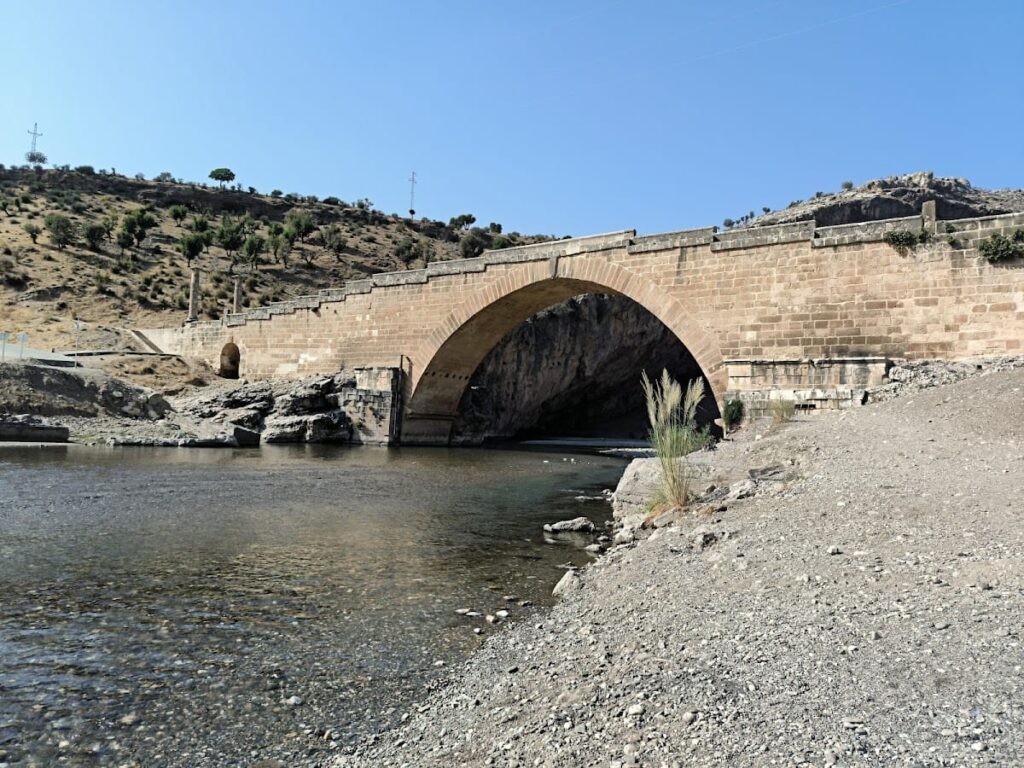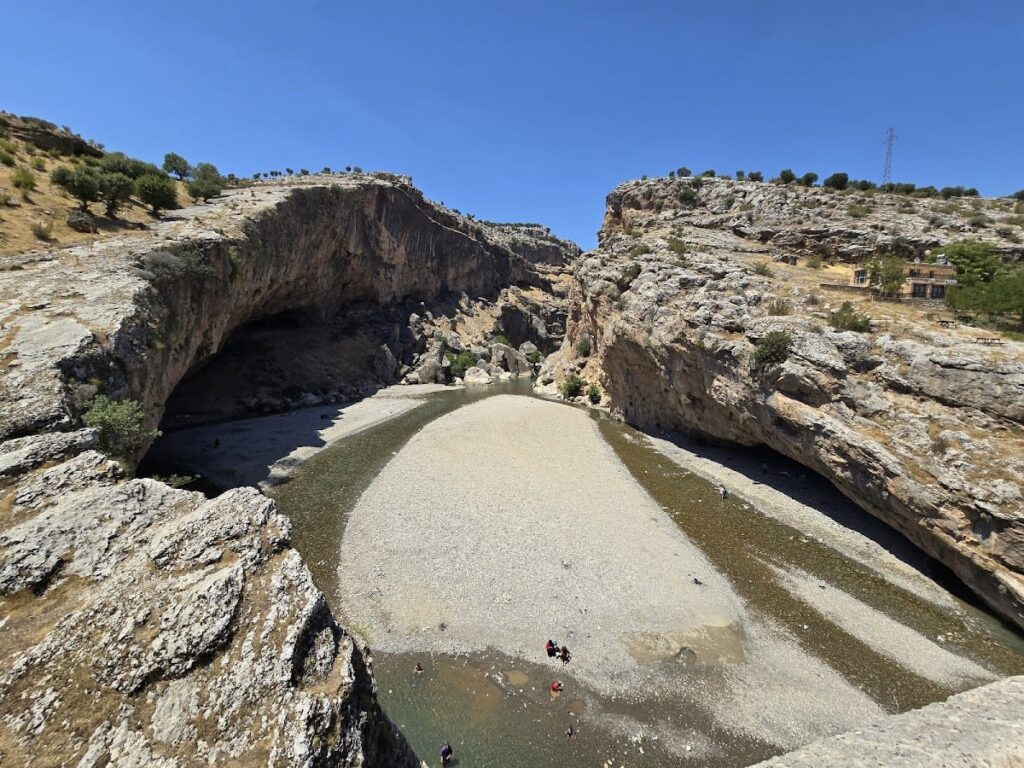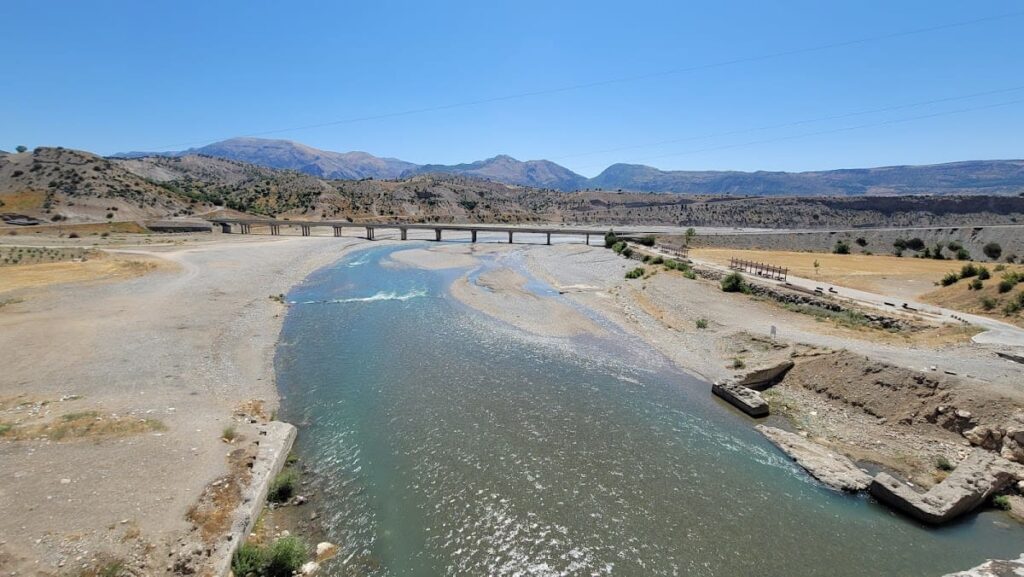Cendere Bridge: A Roman Stone Bridge near Arsameia in Turkey
Visitor Information
Google Rating: 4.7
Popularity: Medium
Google Maps: View on Google Maps
Official Website: www.kulturportali.gov.tr
Country: Turkey
Civilization: Roman
Remains: Infrastructure
History
The Cendere Bridge is located near the ancient city of Arsameia, southeastern Turkey. This area was once part of the Kingdom of Commagene and later integrated into the Roman Empire. The bridge spans the Cendere River, a tributary of the Kâtha River, and was constructed by the Romans.
The original bridge at this site likely dates back to the 1st century CE, built during the reign of Emperor Titus Flavius Vespasianus. Around the end of the 2nd century CE, during the rule of Emperor Lucius Septimius Severus, the existing structure was replaced with the current stone bridge. This construction was carried out by soldiers of the Roman Legio XVI Flavia Firma, stationed in nearby Samosata, under the command of Lucius Marius Perpetuus. The bridge was part of military infrastructure improvements supporting campaigns against the Parthian Empire.
Four Corinthian columns were erected on the bridge by the four cities of Commagene, Samosata, Perre (also known as Pordonnium), Doliche, and Germaniceia. These columns honored Emperor Septimius Severus, his wife Julia Domna, and their sons Caracalla and Geta. After Septimius Severus died in 211 CE, Caracalla ordered the assassination of his brother Geta and initiated a damnatio memoriae, a Roman practice of erasing a person’s memory. As a result, Geta’s column was removed and his name was chiseled out from the inscriptions on the bridge.
The bridge remained in use through the centuries, though its exact role in later periods is less documented. It was first described and illustrated in 1883 by Osman Hamdi Bey and Osgan Efendi during an archaeological expedition to Nemrut Dağ. In the 20th century, the bridge underwent restorations in 1951 and again in 1997. Vehicular traffic was gradually restricted and eventually banned after a new road bridge was built nearby, preserving the Cendere Bridge as a pedestrian crossing and historical monument.
Remains
The Cendere Bridge is a single-arch stone bridge built in the Roman style, spanning the narrowest point of the Cendere River. It measures about 120 meters long, 7 meters wide, and 30 meters high, with an arch span of 34.2 meters. The bridge rests on two natural rock abutments and was constructed using precisely cut stone blocks fitted together without mortar.
Originally, four Corinthian columns stood on the bridge, each about 9 to 10 meters tall. Two columns on the southern side honored Emperor Septimius Severus and Julia Domna, while two on the northern side were dedicated to their sons Caracalla and Geta. After Geta’s damnatio memoriae, his column was removed. The columns were topped with statues of the imperial family, and inscriptions on them recorded the contributions of the four Commagene cities.
Two nearly identical Latin inscriptions are embedded in stone stelae set into the bridge’s parapets. These inscriptions commemorate the bridge’s construction and restoration under Septimius Severus, his sons, and the supervision of Lucius Marius Perpetuus and the Legio XVI Flavia Firma. The current columns may have been relocated from the nearby Karakuş Tumulus, a funerary monument.
By the 19th century, the bridge’s paved surface and parapets showed damage, but the overall structure remained sound. The bridge has undergone restorations in the 20th century to preserve its condition. Today, it stands intact and accessible only to pedestrians, serving as a archaeological and historical feature within the Nemrut Dağ National Park, a UNESCO World Heritage site.




